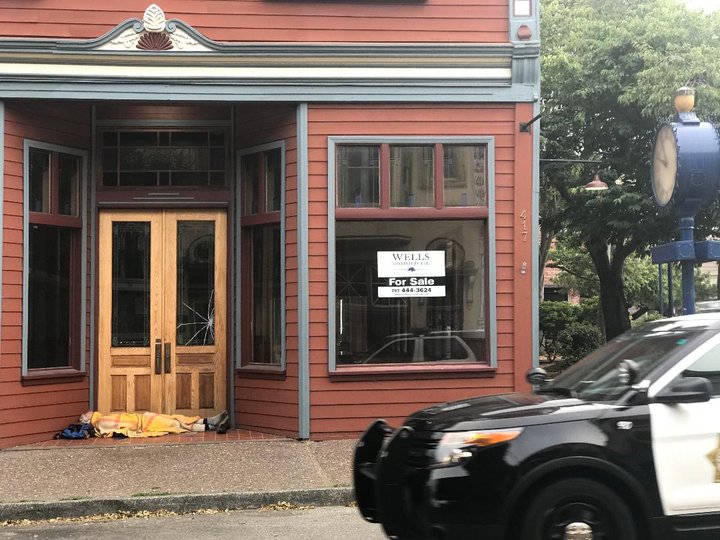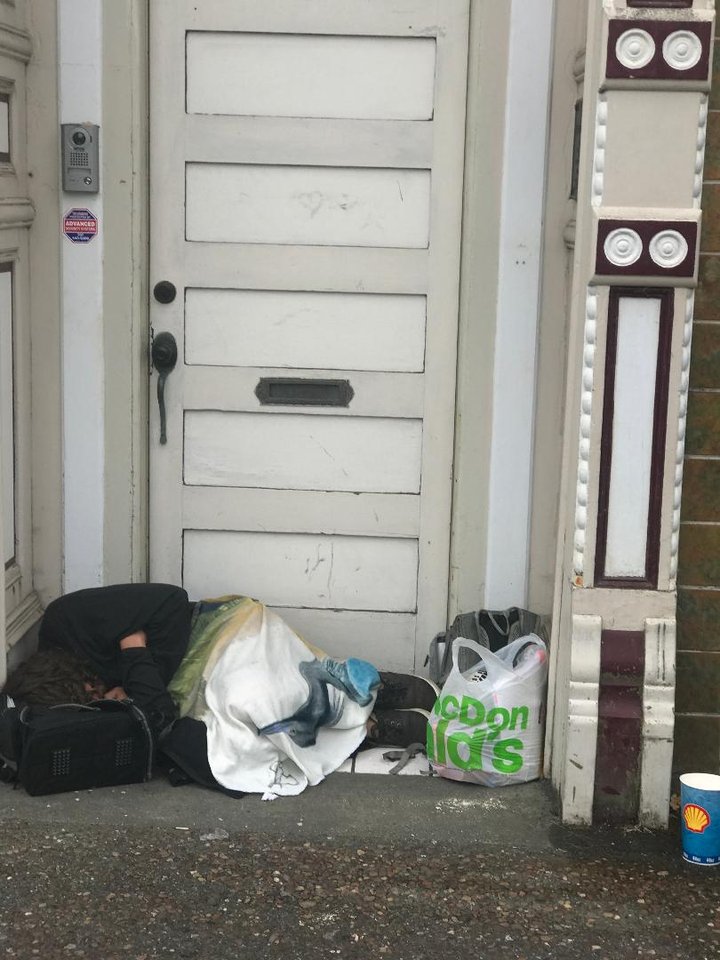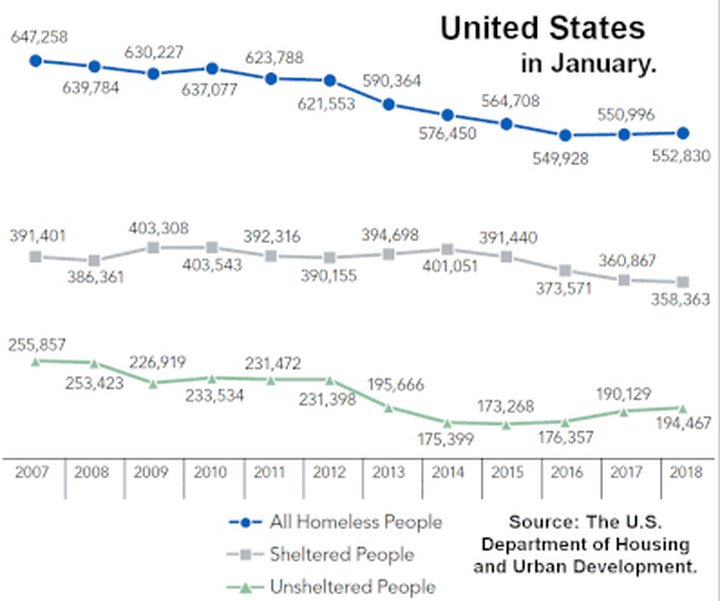Last
Sunday, July 28, the San Francisco Chronicle accepted the
challenge posed by its readers to respond to 89 questions about
homelessness. It’s sobering reading — you can find it all here.
While many of the questions and answers are specifically about SF and
the Bay Area, most of them apply anywhere in the US … Humboldt, for
instance. Here are some highlights from the three-page article.

The homeless situation is getting worse. A count made in January 2019 reported a 24% increase over the previous January 2017 homeless count. In the Bay Area, some 35,000 people are homeless. (We have about 1,500 in Humboldt County, at least double the 2017 count.)
California has 12% of overall US population but 25% of the national homeless population. According to the Chronicle, the main reason is California’s chronic housing shortage (we’re deficient by at least a million units) and the cost of housing. If you lose your home here, it’s brutally tough to get into another home.
Nearly one third of Americans live near or below the poverty line.
Other Western countries don’t have the same kind of homelessness problem we have here because they have national health systems, living-wage laws, unemployment payments that pay basic bills and national social low-income housing programs. Many have laws providing a legal right to a roof.
The top three reasons for homelessness: loss of job, loss of housing, and drug or alcohol abuse.
The top three solutions are housing aid (counseling-intense supportive housing for the most troubled), employment programs and substance abuse rehab.
Shelter economics. A chronically homeless person on the streets of San Francisco costs the city about $85,000 a year in police, medical and other costs, while the City spends about $25,000 per person to maintain them in supportive housing. (I recently wrote about the Finnish experience, where the national “housing first*” program more than pays for itself: “…every formerly homeless person now in subsidized rental apartment saved the government $18,500 per year, mainly in medical and emergency services.”)
[* The philosophy behind housing first is that drug or alcohol addicts can’t get clean while they’re living on the street. Hence the solution of housing them in permanent supportive complexes with on-site counseling on-site without requiring residents to first be free of their addictions.]
In Houston, homelessness dropped 54% in the past eight years as the city stepped up tracking its housing and programs and more efficiently routed people into services.
Stable population: I’ve often heard that homeless folks move to Eureka because of our liberal “no one need go hungry here” policies. That myth is belied by the Chron report: 55% of homeless have lived in SF for 10 or more years, while only 6% said they’d moved there in the last year.
Who are they? 42% of homeless struggle with drug and/or alcohol abuse. 39% have psychiatric or emotional conditions; 8% are veterans. 44% of homeless people over 50 became homeless after their 50th birthday.
The number one reason why homeless people resist going to shelters: theft of their belongings. Similarly, they feel safer camping and sleeping in heavily trafficked areas.
Law enforcement officials say cracking down on drug use is ineffective and makes criminals of people with severe addictions. There are no significant treatment programs in local jails or prisons.

Those are the data reported by the Chron. My take is that the solution is staring us in the face: house the homeless! Whether in San Francisco, Portland, Seattle or here in Humboldt, the problem isn’t going to go away, it’s only going to worsen. Every misstep taken by Federal Government — which exacerbated the modern era of homelessness in the 1980s with cuts in social and housing programs — only intensifies the situation. Reduce food stamps, slash the HUD budget, ration the availability of detox centers, and sure as day follows night, more homeless will appear on our streets.
Housing isn’t cheap (one estimate puts the cost to house the Bay Area’s homeless at nearly $13 billion) and the money will have to come from the Feds, who took it away in the first place. But c’mon. If this country can afford such boondoggles as occupying Afghanistan ($45 billion per year), building a border wall ($60 billion), attempting to create an (oxymoronic) missile defense system ($200 billion), fighting an entirely useless war against Iraq ($5 trillion), surely we can afford to solve a clear and present problem that is part of our lives day in, day out.
And remember, it costs a lot more to leave a homeless person on the street — $60,000 a year in San Francisco — than to house them.

CLICK TO MANAGE